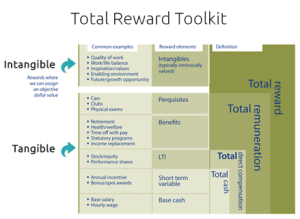1. Big Data’s Relationship with Business Intelligence and Data Warehousing
It seems like you can’t pick up a technical magazine without reading about how big data is changing the world—and the untold implications of this technology. But what the heck is big data? And didn’t we already solve this thing with business intelligence and data warehousing?
Big data, or BD, is the collection of transaction-level detail for analysis. The data is kept close to the transactional detail so it can be examined for hidden trends only seen when you analyze the individual transactions. The data can come from different sources but is analyzed in a common pool. This is most often a feed (or copy) of the transactions as they occur; they are streamed to the BD solution. Often, the value of the data is very time-dependent; the sooner the information is available, the more valuable it is.
There are four key terms used when talking about BD:
[Continue Reading…]
2. Visualizing Big Data with augmented and virtual reality: challenges and research agenda
This paper provides a multi-disciplinary overview of the research issues and achievements in the field of Big Data and its visualization techniques and tools. The main aim is to summarize challenges in visualization methods for existing Big Data, as well as to offer novel solutions for issues related to the current state of Big Data Visualization. This paper provides a classification of existing data types, analytical methods, visualization techniques and tools, with a particular emphasis placed on surveying the evolution of visualization methodology over the past years. Based on the results, we reveal disadvantages of existing visualization methods. Despite the technological development of the modern world, human involvement (interaction), judgment and logical thinking are necessary while working with Big Data. Therefore, the role of human perceptional limitations involving large amounts of information is evaluated. Based on the results, a non-traditional approach is proposed: we discuss how the capabilities of Augmented Reality and Virtual Reality could be applied to the field of Big Data Visualization. We discuss the promising utility of Mixed Reality technology integration with applications in Big Data Visualization. Placing the most essential data in the central area of the human visual field in Mixed Reality would allow one to obtain the presented information in a short period of time without significant data losses due to human perceptual issues. Furthermore, we discuss the impacts of new technologies, such as Virtual Reality displays and Augmented Reality helmets on the Big Data visualization as well as to the classification of the main challenges of integrating the technology.
[Continue Reading…]
3. A Successful Approach to the Big Data Adoption Journey
Randy Bean recently wrote in the Wall Street Journal, “Big Data represents a business adoption paradox: It promises speed, but successful business adoption takes time. When I advise executives or speak to business groups, I encourage organizations to view business transforming initiatives like Big Data as a journey. Success ultimately depends upon organizational alignment, process change, and people. Organizations need to develop a long-term plan and destination with many checkpoints along the way. True there are opportunities for “quick wins”– to ensure credibility, build organizational support, establish momentum, and secure funding—but for the most part, patience and persistence are essential.”
[Continue Reading…]
4. Why your next big database decision may be a graph
NoSQL databases are clearly on the rise, but not all NoSQL is created equal.
After all, 451 Research recently discontinued its longstanding tracking of NoSQL database popularity, arguing that since “none of the top 10 look like changing places any time soon, and none of the players outside stand any chance of breaking into the top 10, the time has come to retire the NoSQL LinkedIn Skills Index.”
[Continue Reading…]
 Employee reward system should be based on the values, vision and goals of the organisation, and modifications must be done to make the entire process special and rejuvenating for the employees. A well-balanced reward system must recognize the performance and behaviour of the employees. As performance is directly linked with the final outcomes, it is easier to address. Appreciation and Recognition are the most underrated rewards, and are ignored by most businesses. These are high-return and low-cash ingredients, and must be an integral part of a well-balanced reward system. The simple act of expressing gratitude and acknowledge the performance can have positive impact on the employees, increasing their morale, and improving their performance.
Employee reward system should be based on the values, vision and goals of the organisation, and modifications must be done to make the entire process special and rejuvenating for the employees. A well-balanced reward system must recognize the performance and behaviour of the employees. As performance is directly linked with the final outcomes, it is easier to address. Appreciation and Recognition are the most underrated rewards, and are ignored by most businesses. These are high-return and low-cash ingredients, and must be an integral part of a well-balanced reward system. The simple act of expressing gratitude and acknowledge the performance can have positive impact on the employees, increasing their morale, and improving their performance.